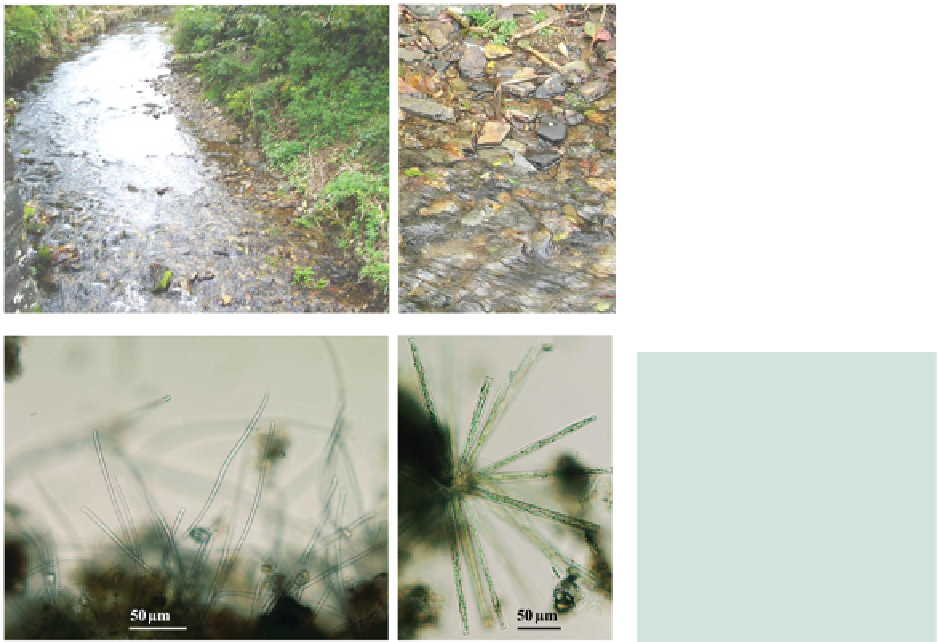Environmental Engineering Reference
In-Depth Information
Figure 2.23
River periphyton.
Top: general view of fast-flowing
stream (left) with detail of rocky
substratum (right). Bottom left:
Detached periphyton sample obtai-
ned by scraping the stone surfaces,
showing a filamentous mat of
Phormidium
(blue-green) attached to
dense organic material. Bottom right:
Stellate cluster of diatom (possibly
Synedra
) cells radiating out from a
single point of attachment.
Table 2.6
Shallow-Water Communities: Variations in Algal Collecting Method Depending on Substrate Type.
Substrate Type
Collecting Method
Epilithic.
Stones and rocks
Remove stone and scrape surface with knife or brush with stiff brush. If stone
too large to remove hold a phytoplankton net downstream of the rock and
then scrape or brush so that the material removed is swept into the net.
Epidendric
Woody material
As above
Epipelic
Sediment surface
Gently suck up sediment surface using a pipette with a rubber teat or gently
scoop up the top layer of sediment into a suitable container.
Epiphytic
Plant surfaces
Scrape algae off the macrophyte surface, place in a tube with water and/or
preservative and observe later under a microscope.
Epipsammic
Sand
Collect a small quantity of sand from the surface region. Place in a tube with a
small quantity of water and shake vigorously. Allow to settle and pipette
off some of the settled material and place on a slide for observation. The
selection of sand grains should also be observed in case there are species
that have not been detached by shaking.
Epizooic
Hard-shelled animals
Carefully collect the host animal. Use the same technique as for the epilithon.





Search WWH ::

Custom Search